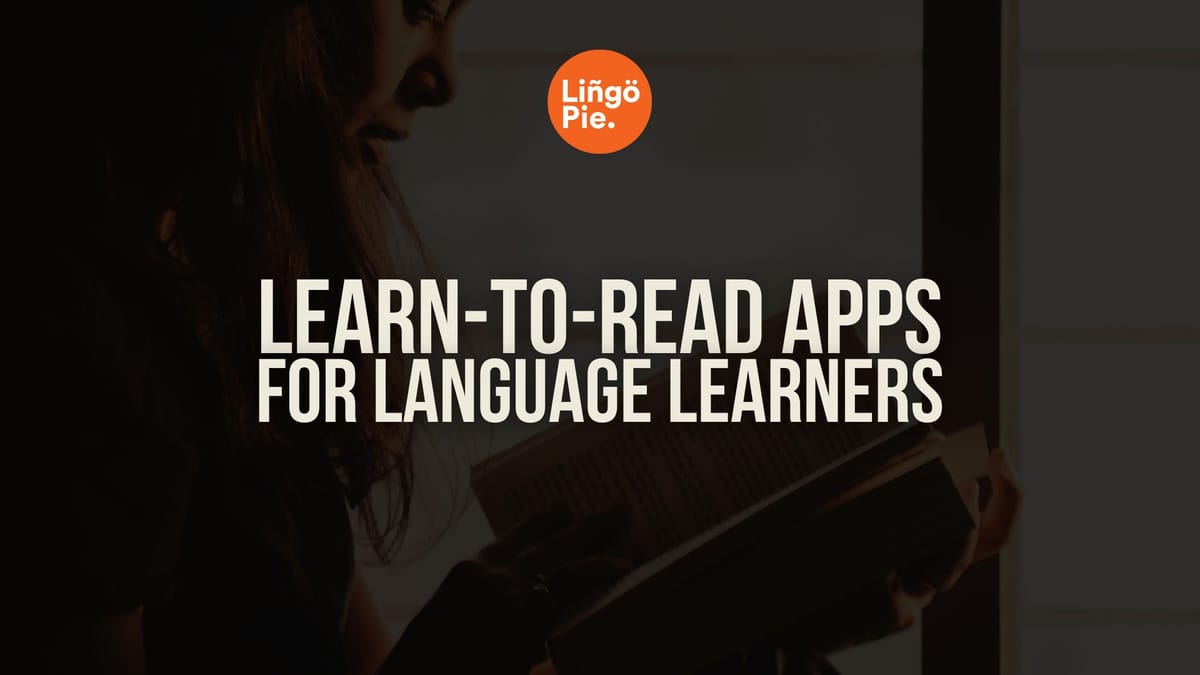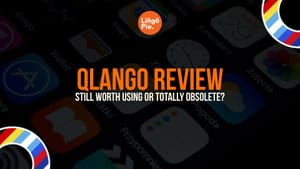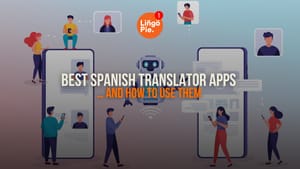If you’re learning a new language or helping your child learn to read, one of the best things you can do is spend time reading. It helps you recognize words, connect letters with sounds, and understand what they mean together. Reading also boosts memory, builds vocabulary, and gives you a better sense of how the language fits together in everyday life.
The more you read, the easier it becomes to think and express yourself naturally. In this post, we’ll look at a few great apps that make reading practice simple and enjoyable for both adults and kids. These tools turn screen time into learning time — and might even help you or your little one fall in love with reading all over again.
- Language Reactor Review: Why Lingopie Is The Better Choice
- 6 Best AI Language Learning Apps For Beginners
- 5 Best Language Apps For Cultural Immersion

Why Use Apps To Learn To Read
Research consistently shows that reading is one of the most important skills for language development and overall academic success. For example, children who were stronger in word-reading in fourth grade showed significantly faster vocabulary growth between grades four and ten.
Another study found that teenagers who read in their leisure time knew 26 % more words than peers who didn’t. And for language learners, reading isn’t just a pass-time—it becomes a key way to absorb vocabulary and grammar in context. All this underscores how reading supports understanding, expression and long‐term fluency.
Fortunately, apps designed for learning to read make this process easier and more accessible both for adults learning a new language and for kids just beginning.
- For adults, reading apps allow you to go at your own pace, encounter fresh vocabulary in meaningful contexts, and revisit material as needed.
- For children, the interactive and visual features of good reading apps keep them engaged and motivated—turning what might feel like “study time” into enjoyable reading time.
Over time, these small, consistent reading sessions add up and create real forward motion in language ability.
Best Learn To Read Apps
Lingopie Short Stories

Lingopie Short Stories is designed for adults and teens who want to strengthen their reading skills while learning a new language. It offers short, interactive stories with audio narration, dual subtitles, and instant translations, so you can follow along easily.
Each story helps you build vocabulary and comprehension in context, making it ideal for learners who want something engaging and practical rather than textbook-style lessons.
| Pros | Cons (That Are Actually Still Pretty Great) |
|---|---|
| Ideal for adults and teens learning a new language | Works best once you know a little of the language — so it helps you move from beginner to confident faster |
| Interactive stories with audio narration and translations | Focuses on short, story-based content, which keeps lessons easy to fit into your day |
| Helps build real vocabulary and reading confidence | Full access comes with a subscription, but it’s a worthwhile investment for consistent language growth |
Teach Your Monster to Read

Teach Your Monster to Read is a fun, game-based app for young children learning the basics of reading. It focuses on phonics, letter sounds, and simple word recognition through playful missions and colorful characters. Kids learn step by step as they help their monster grow stronger by reading and sounding out new words.
| Pros | Cons |
|---|---|
| Fun, game-style lessons that keep kids engaged | Geared only toward early readers (K–2) |
| Strong focus on phonics and word recognition | May feel repetitive for older children |
| Colorful design and clear structure for step-by-step progress | Limited reading comprehension practice |
Duolingo ABC

Duolingo ABC introduces early reading through short, interactive lessons that teach letters, sounds, and sight words. It’s completely free and uses mini-games to keep young learners engaged. Each activity is designed to build confidence and help children recognize how words and sounds connect naturally.
| Pros | Cons |
|---|---|
| Completely free and ad-free | Only covers early reading stages |
| Teaches letters, sounds, and sight words clearly | Lacks depth for older or advanced readers |
| Short, interactive lessons that build confidence | Requires parental guidance for very young learners |
Lingokids

Lingokids is built for toddlers and preschoolers who are just beginning to explore words and stories. It combines songs, stories, and simple games to teach basic reading and general learning skills. The app focuses on play and curiosity, helping kids build a foundation for reading while having fun.
| Pros | Cons |
|---|---|
| Play-based learning that feels natural for toddlers | Requires a subscription for most features |
| Combines songs, games, and stories for early literacy | Can be distracting due to high interactivity |
| Teaches general knowledge alongside reading | Less focus on structured reading progression |
Storybird

Storybird blends reading and creativity by letting users write and read illustrated stories. It’s great for learners of any age who enjoy storytelling and want to practice reading in a meaningful way. By reading and creating stories, users improve vocabulary, grammar, and imagination all at once.
| Pros | Cons |
|---|---|
| Encourages creativity through writing and storytelling | Not ideal for complete beginners |
| Beautiful illustrations make reading enjoyable | Limited guidance for structured reading skills |
| Great for improving vocabulary and imagination | Some features require payment or a teacher account |
How Lingopie Helps You Learn Through Real Stories

Reading short stories is one of the most enjoyable and effective ways to learn a language — and that’s exactly what Lingopie Short Stories is designed for. Each story is written by native speakers and tailored for different levels, so you can build your skills step by step. With built-in translations, audio narration, and clickable words, you can see how vocabulary and grammar work in real sentences while hearing the natural rhythm of the language.
What makes Lingopie Short Stories special is how it turns reading practice into a habit you’ll actually look forward to. You can start with quick, one-minute reads or dive into longer tales, all while tracking your progress and reinforcing what you learn through repetition and context. The stories are short enough to fit into your day but rich enough to help you grow your confidence and comprehension naturally.
Ready to Start Reading in a New Language?
Whether you’re learning a new language yourself or helping your child discover the joy of reading, the right tools can make all the difference. Apps can turn practice into play... and Lingopie Short Stories takes it a step further by making reading feel effortless and rewarding.
So if you’re ready to make reading part of your language journey, give Lingopie Short Stories a try. A few minutes a day can open up a whole new world of words and stories waiting to be read.








![Language Reactor Review: Why Lingopie Is The Better Choice for Language Learning [2026]](/blog/content/images/size/w300/2024/12/Language-Reactor-Review.jpg)
